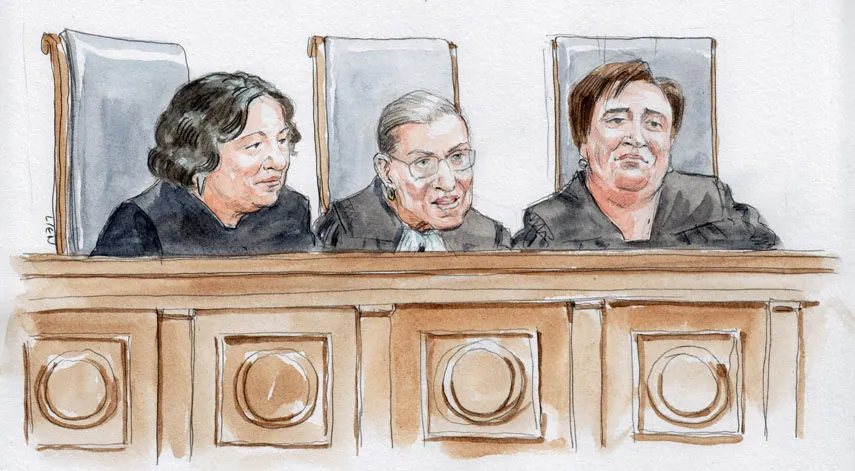RBG: She never stopped caring

on Sep 25, 2020 at 1:48 pm

This tribute is part of a series on the life and work of the late Justice Ruth Bader Ginsburg.
Rachel Bayefsky is an associate at Akin Gump Strauss Hauer & Feld LLP. She clerked for Ginsburg during the 2018-19 term.
I will never forget a certain image from my clerkship with Justice Ginsburg: the justice hovering over her desk in the evening, sharp pencil in hand, meticulously attending to her work long after the sky outside her chambers had grown dark. During the 2018 term in which I clerked, Justice Ginsburg broke her ribs and underwent surgery for lung cancer. Yet she continued to labor over each word in her opinions, to write thoughtful messages to countless correspondents, and to immerse herself in the intricacies of cases that would never make the headlines.
Justice Ginsburg, that is, always continued to care. This feature of the justice manifested itself, for example, in her approach to writing. She revised her work so that no one would stumble over a phrase or need to read a sentence twice. Each word had its place and its purpose. When going over one draft opinion with the justice, I noticed that she had written in the margin two words that were almost synonyms; she paused for a time and then explained which one she deemed most fitting. She seemed to have a thesaurus in her head. Words like “incant,” “hobble,” and “tug against” allowed her to paint pictures with words — a skill she traced to her undergraduate training from Vladimir Nabokov at Cornell.
For Justice Ginsburg, there was more than the devil to be found in the details. Her concern about the form of writing reflected values fundamental to the rule of law. She prized the clarity that would enable both lawyers and the general public to understand what the law is. She prioritized the goal of providing crisp guidance to judges tasked with implementing Supreme Court decisions. She was adept at seeing her own work from another person’s point of view.
Justice Ginsburg cared deeply, too, about the individuals affected by judicial rulings. She was passionate about civil procedure cases, for instance, not only because she found it intellectually engaging to delve into the finer points of collateral estoppel — though she did — but also because of the greater societal aims that she knew procedure could advance or thwart. Justice Ginsburg had an analytically brilliant mind; in short order, she broke down cases into their simplest parts without sacrificing necessary complexity. At the same time, she responded viscerally to unfair treatment that litigants had suffered. For Justice Ginsburg, the law was not a game, though it could certainly be fun; it was a calling.
At the end of a discussion with my co-clerks and me about an oral argument or the justices’ conference, Justice Ginsburg often said: “And so we go on — to tomorrow.” We would then begin to talk about the cases to be argued or voted on the following day. But I always thought that phrase was a suitable encapsulation of the Justice’s outlook more broadly. There was invariably more to be done, and the next day’s work mattered. And so we go on, Justice — and so we go on.


